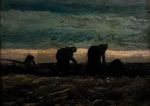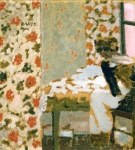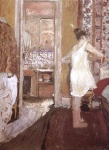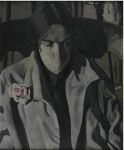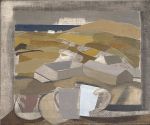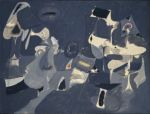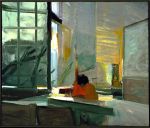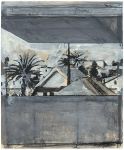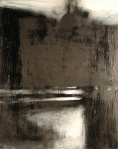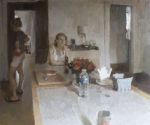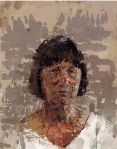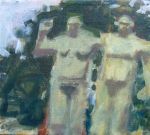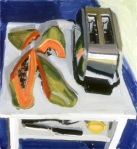Staying Neutral
March 7, 2014 § 3 Comments
Experience teaches us that limitation is the essence of creativity. Like a single flute playing in an echo chamber, the sounded notes of a few colors, a few shapes or lines set up visual resonances within the bounding space of the rectangle, multiplying complexity in unforeseen ways through their endless permutations. Using color in a limited way is a great way to explore this phenomenon. Here are some examples of works that choose to proscribe the range of color intensity, exploring the neutral zone that lies in the center of the color circle. Because of the relativity of color, the rainbow continues to assert itself but in a lowered intensity key. Color appears, not through pigmentation, but through optical relationships. Absence becomes presence.
Contemporary Figure Paintings
March 22, 2013 § Leave a comment
Every decade or so an article appears in the press proclaiming the return of the figure in art, implying that it somehow “went away.” In fact, the figure as a subject for painting never went away, and never will until the human race itself disappears. In a symposium on drawing several years ago at Randolph-Macon Womans College (now Randolph College) in Lynchburg, Virginia, I heard Janet Fish say, “Isms come and isms go, and the realists just keep painting.” (Or something to that effect.) Her statement could, I think, be applied accurately to the state of figure painting. Whatever the current obsession of the so-called art world, artists just keep painting the figure. Below is an album of some of the most compelling figure artists working today.
 Phil Geiger, figure study, oil on panel, 14″ x 10.” Collection of Frank Hobbs
Phil Geiger, figure study, oil on panel, 14″ x 10.” Collection of Frank Hobbs
The Beauty of Shapes
September 24, 2011 § Leave a comment
“We look up and see a coloured shape in front of us and we say – there is a chair. But what we have seen is the mere coloured shape. Perhaps an artist might not have jumped to the notion of a chair. He might have stopped at the mere contemplation of a beautiful color and a beautiful shape…” -Alfred North Whitehead
“Remember that a picture, before being a battle horse, a nude woman, or some anecdote, is essentially a plane surface covered with colors assembled in a certain order.” -Maurice Denis (1890)
How often we forget the simple truth of Maurice Denis’ statement as we peer into our three-dimensional world and try to “make” a tree, a face, a figure, or a teacup on our canvas. Annie Dillard’s essay on seeing, from a previous post on this blog, reminds us of just how far we’ve come from the infantile state of innocence when visual sensation was just “color-patches unencumbered by meaning.” The struggle to regain this innocent vision of color and shape is a large part of our “training” as artists. We want to be able to see our sensations, not just the things those sensations add up to, because this kind of seeing is what allows us to form questions that we can take to the palette. What is that hue? What is its tonal value? What is it’s degree of saturation or intensity? These three questions are the Holy Trinity of color mixing. (There’s a fourth, but we’ll save it for another post.)
But mixing color is only one piece of the puzzle. The color has to have a boundary or shape. This is the meeting place of drawing and painting. Stripped of the third dimension, the world’s forms and spaces precipitate two-dimensional shapes. Out of this distilled essence painters compose their paintings. Here are some painters who remind us of the beauty of shapes, all kinds of shapes. That’s what paintings are made of.
Weekly Object Painting
January 18, 2011 § 1 Comment
“The day is coming when a single carrot, freshly observed, will set off a revolution.” – Cezanne
“With an apple I will astonish Paris.” – Cezanne
“Seeing is the initial act of valuing, and the nature and infinite potential of human beings to see and to aesthetically order the world is the one pure subject of art.” – Robert Irwin, “The Hidden Structures of Art,” 1993
Some inspirations to guide your studies:
Also, check out this page from painter Catherine Kehoe’s blog, Powers of Observation:
http://picasaweb.google.com/catherinekehoe8/SomeStillLifePaintings#



